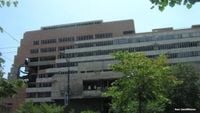In a move that has ignited fierce debate across Serbia and drawn international attention, the Serbian parliament voted on November 7, 2025, to approve a controversial property development led by Jared Kushner, son-in-law of former U.S. President Donald Trump, on one of Belgrade’s most symbolically charged sites. The plan, backed by President Aleksandar Vučić’s ruling Serbian Progressive Party, paves the way for a $500 million luxury hotel and apartment complex on the ruins of the former Yugoslav Army headquarters, a building that was bombed by NATO forces in 1999 during the Kosovo conflict.
The decision was far from unanimous. Parliament passed the special law in a 130 to 40 vote, classifying the redevelopment as a project of national importance and stripping the site—known as the Generalstab—of its protected cultural status. That move has been met with an uproar from opposition politicians, architectural experts, and a broad swath of the Serbian public, many of whom see the site as a war memorial and a rare surviving work by the modernist architect Nikola Dobrović.
For many Serbs, the battered shell of the Generalstab stands as a somber reminder of the 78-day NATO bombing campaign that ended the Kosovo war. The building was vacant when it was struck twice in the space of 15 minutes, yet its ruins have come to symbolize resistance to Western military intervention and the pain of recent history. As Newsweek reported, local experts and activists have repeatedly called for the complex to be preserved, both for its architectural significance and as a living memorial.
Jared Kushner’s Miami-based investment firm, Affinity Partners, signed a 99-year lease with the Serbian government after the site’s protected status was revoked in 2024. The company’s vision for the site is ambitious: a gleaming high-rise hotel and luxury apartments, complete with amenities that some critics have derided as “casinos and Jacuzzis.” The $500 million project, according to the BBC, has been in the works for over a year, but was stalled in May 2025 when an investigation was launched into allegations that a public official had forged documents used to lift the site’s protection.
Despite the legal wrangling and public outcry, President Vučić has remained steadfast in his support. In a June 2025 interview with the BBC, he defended the proposal, saying, “It’s important to overcome the burden from 1999. We are ready to build better relations with the US—I think that is terribly important for this country.” Vučić’s government, which holds a parliamentary majority, pushed the project through by invoking a constitutional provision to fast-track the redevelopment as urgent and of national significance.
The push for the Trump-branded development comes at a complicated moment for Serbia. The country is balancing its historical ties to Russia—still a powerful presence in the region, especially through majority Russian-owned assets like the Petroleum Industry of Serbia (NIS)—with efforts to curry favor with Washington. The Serbian economy has felt the squeeze from U.S. sanctions on Russian interests, and Trump-era tariffs have only added to the pressure. According to the BBC, Vučić’s administration is keen to signal a willingness to move beyond the traumas of the late 1990s and to position Serbia as open for business and investment from the West.
Yet the move has triggered a wave of protests and legal challenges. Opposition politicians have denounced the law as unconstitutional and a betrayal of Serbia’s history. Aleksandar Jovanović, a prominent critic, told AFP that the landmark would be replaced with “casinos and Jacuzzis.” Marinika Tepić, a center-left MP, accused the government of sacrificing the nation’s heritage “to please Trump,” as reported by Politico.
Architectural experts and preservationists have also sounded the alarm. Katarina and Marina, Belgrade architects affiliated with the civic group arh.politicne, told Newsweek on November 10, “The general public and both the professional and political spheres outside the ruling party and coalition, are strongly opposed to this. We are all deeply alarmed.” They and others have organized a protest scheduled for November 11, 2025, outside the site, with further initiatives planned to increase public pressure on lawmakers.
Journalist and analyst Nikola Mikovic echoed these concerns, telling Newsweek, “Building the Trump Tower hotel on the ruins of the Army Headquarters is widely seen as a humiliation for Serbia.” The sentiment among many is that the redevelopment erases a vital part of the country’s collective memory in favor of commercial interests linked to foreign investors.
Still, supporters of the project argue that it represents a necessary step toward modernization and economic revitalization. Populist lawmaker Milenko Jovanov, speaking in parliament, declared, “We are demolishing the ruins in order to build.” For Vučić and his allies, the development is not just about bricks and mortar—it’s a statement of intent, a bid to turn the page on a painful chapter and attract much-needed investment.
The controversy, however, is not just about history or architecture. It comes amid a period of domestic instability in Serbia, marked by yearlong anti-corruption protests that erupted after a deadly collapse of a concrete canopy in Novi Sad in November 2024. Transparency Serbia, an anti-corruption watchdog, has raised concerns about the state’s role in facilitating lucrative property deals, and the investigation into the forged documents has only fueled suspicions of official misconduct.
The stakes are high for Vučić’s government. By aligning itself with a high-profile American investor—especially one so closely tied to the Trump brand—the administration is making a calculated gamble that the benefits of improved U.S. relations will outweigh the backlash at home. Yet, as protests gather steam and critics grow louder, it remains to be seen whether this gamble will pay off.
For now, the fate of the Generalstab hangs in the balance, caught between the demands of memory and the lure of redevelopment. As Serbia charts its course between East and West, past and future, the debate over Belgrade’s skyline has become a microcosm of the nation’s broader struggles—and an emblem of the choices that will shape its destiny for decades to come.
